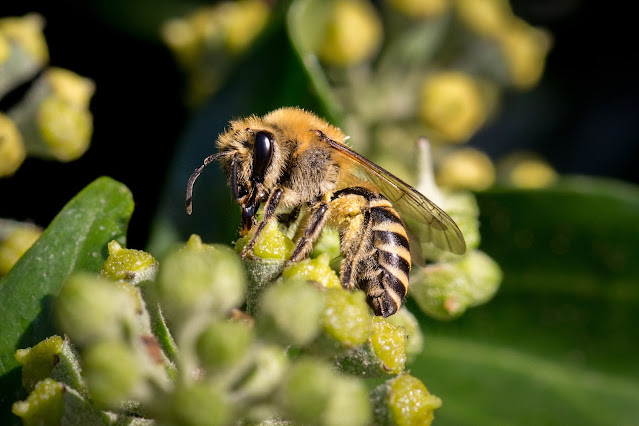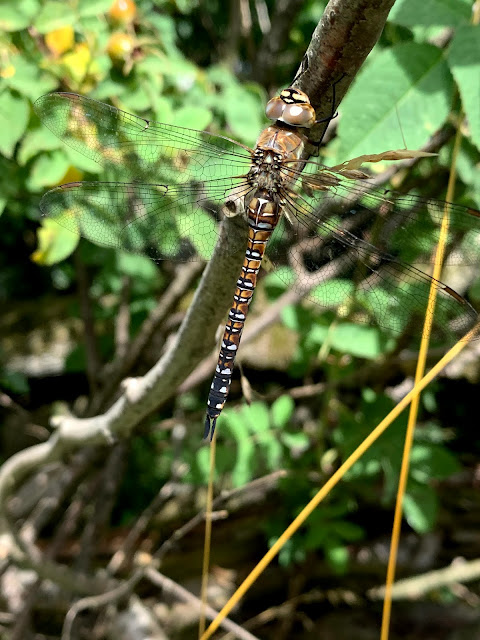New for me at least, but also fairly new to the UK and relatively new to science. This is the ivy bee, Colletes hederae. I went to look for it in the village of Nether Heyford in Northamptonshire and found dozens on flowering ivy, in the hedge next to what used to be my dad's allotment. Females are about the size of a honey bee with very prominent cream/yellow and black stripes.
These have yellow pollen in their scopae (pollen brushes on their back legs).
Males are smaller and thinner, as with most solitary bees.
Pleased with seeing these for the first time, I was even more pleased to find them in my mother's garden when I returned home.
The ivy bee is a solitary mining bee. Each female digs a nest in sandy soil and provisions it with pollen to feed the developing larvae. The nests are separate but are often in close proximity in an aggregation which may number thousands of nests. Amazingly the ivy bee was first described in 1993 in southern Europe, having previously been misidentified as Colletes halophilus, the morphologically identical but ecologically distinct sea aster mining bee. The first UK specimen was recorded in Dorset in 2001 and it has since spread over much of the southern half of England and Wales. There are a few recent records from farther north, including just south of the Tyne in County Durham, so with luck ivy bees will reach Newcastle soon.























































